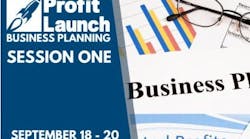I subscribe to “Fortune Small Business Magazine.” Columnist Jay Goltz wrote an article called “Do the Math.” He described a friend’s business this way…
“My friend was running something of a Ponzi scheme, except that he was conning himself instead of clients.”
The article illustrated how you can fool yourself (and your banker) into thinking you have assets when it’s all just a house of cards. I have seen lots of balance sheets built on faulty accounting. If you are starting to sweat, read on. You can fix your financials and you can turn around a bad financial situation if you are willing to apply some bare bones business basics.
Bare Bones Biz basics…
In business, there is ultimately one financial scorecard: the balance sheet. Every other financial report is a subset of the balance sheet. This is the balance sheet equation: Assets = Liabilities + Equity
Assets = Claims on the Assets. This equation is in line with the universal law: what goes around comes around. Or, for every action there is a reaction. It’s how we keep financial score in the game of business.
Warren Buffet’s Rules for Business
I love Warren Buffet. The guy makes money the bare bones basic way. He builds companies that make profits. Here are his rules for business:
- Protect assets. The assets are your “stuff.” What you have. The first financial objective is to protect the wealth you have.
- Grow assets. The second financial objective is to expand the “stuff.” Grow cash and other assets.
That’s the game! Let’s look at the three ways that you can grow assets.
- Through liabilities. You can borrow money. For example, when you buy a new truck, and get a loan for that truck assets go up and the liability (a loan) goes up.
- Through owner investment. You can put your own money into the company. Perhaps when you got started you wrote a check from your personal checking account and opened your business checking account. Assets go up and owner’s investment (an equity account) goes up.
- Through Profits. Sell stuff for more than it costs and create profits. Assets go up and net income goes up. This year’s profits show up in the equity section of your balance sheet. When you lose money — sell stuff for less than it costs you — equity goes down and assets go down. That’s the elegant, beautiful, sometimes horrible truth of the balance sheet.
Are you winning or losing the game?
Make sure the balance sheet is right. Then, take a look at the numbers. If you have more liabilities than assets, you are going backwards. You’ll have a negative equity balance. You may be able to fix it. The long-term fix needs to address the reason you got in trouble in the first place. You have got to charge more than it costs. And you must have enough sales at the right price to cover all expenses and make a profit.
You might be able to borrow more money and you may be tempted to put more of your own money into the company. You might even entice an investor to infuse some cash. See how you can create a Ponzi scheme with you and perhaps your investor as the big losers? The best and surest way to create wealth is to generate lots of profit.
Profits solve lots of problems
There are worse things than going out of business. Like building a mountain of debt or getting into tax or bank fraud trouble. You could go out of business. (It may be your best, most liberating option.) Or, you may be able to fix the one you’ve got. Ready to make the leap to profitability? I challenge you.
Ellen Rohr, president of ZOOM DRAIN, a drain & sewer franchising company. She’s the author of four business books, including “Where Did the Money Go?” – accounting basics, and "The Weekend Biz Plan.” Ellen’s a member of the EGIA faculty, sharing her snappy, helpful, and usually irreverent insights on business planning and financial clean-up.
EGIA Contractor University has assembled the most experienced and dynamic faculty ever put together. Faculty members have personally built some of the most successful contracting companies in America. During Contractor Leadership Live, Ellen will be leading an Exclusive Workshop, Tuesday, Sept. 12, From 1:00 pm – 4:00 pm. This Exclusive Workshop is only available to the first 500 Contractors who register for the All-Access pass. Visit Contracting Business for more information and to learn about the Contractor Leadership Live event. Reach Ellen at www.EllenRohr.com.










